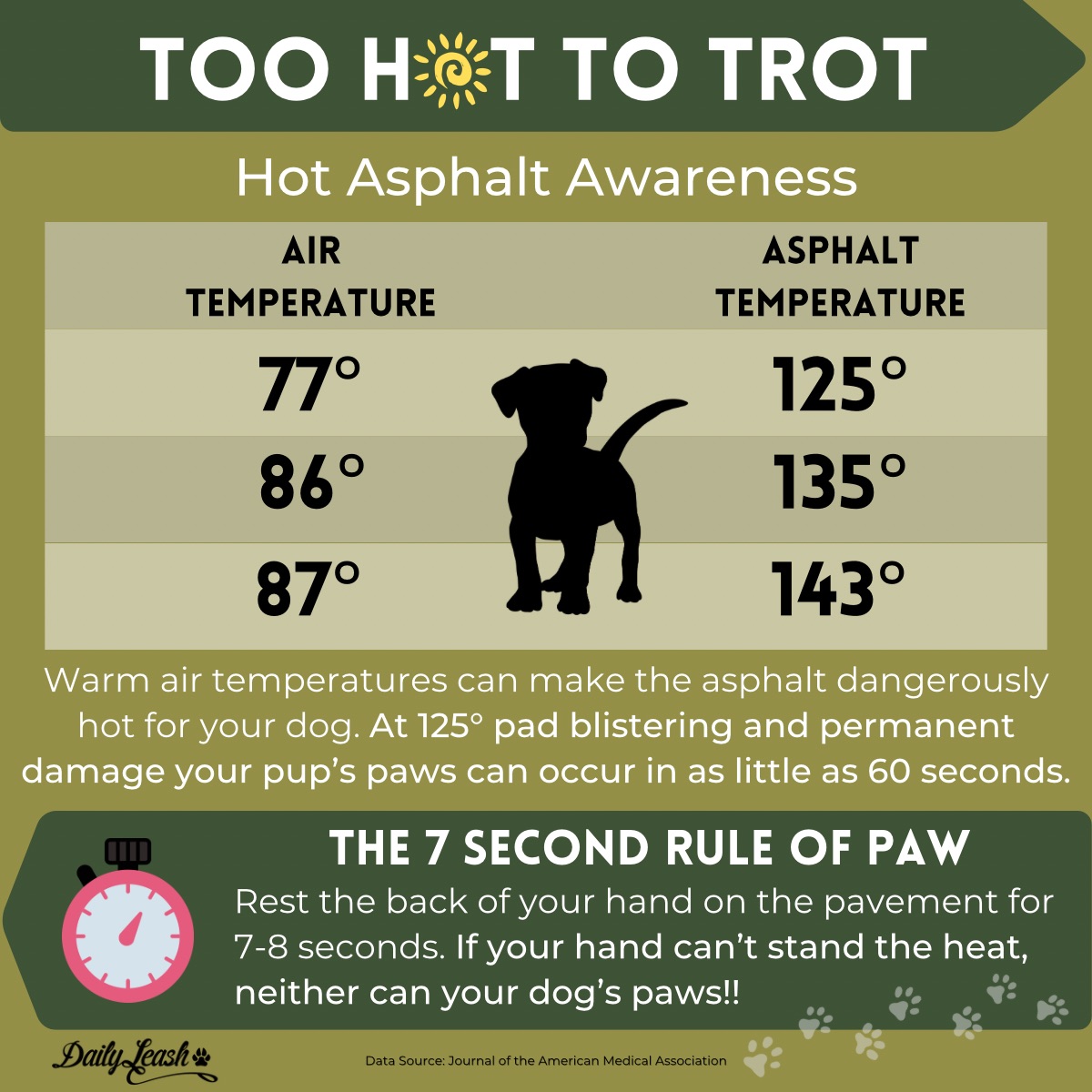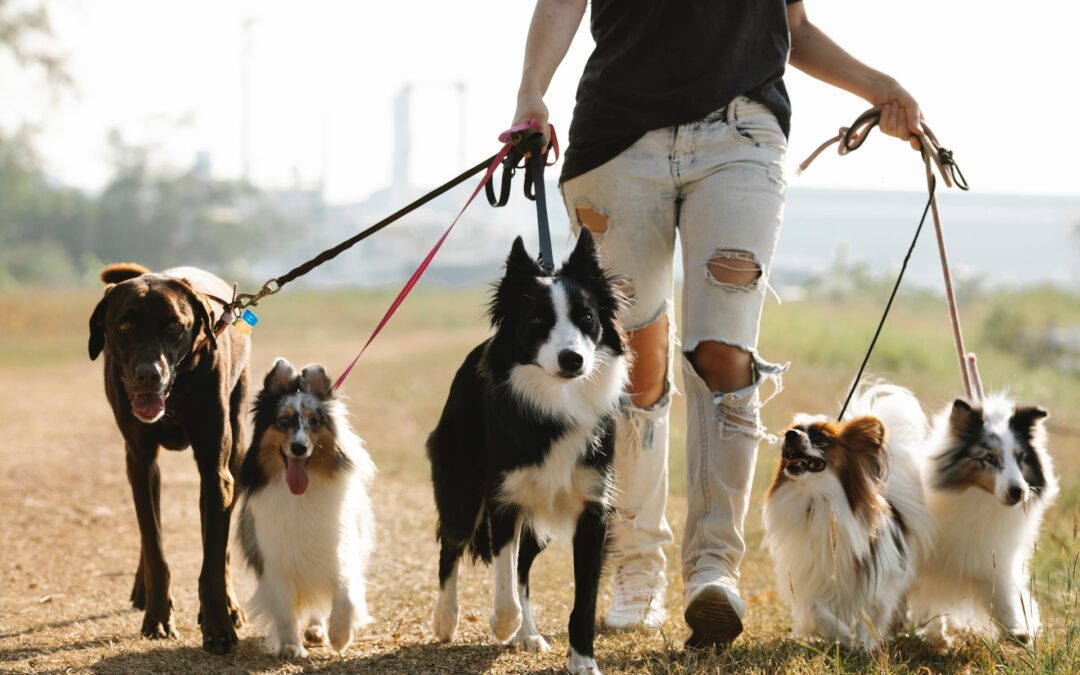Dog walks are something we know a thing or two about at Daily Leash, and as far as we’re concerned, there is little better on a nice spring or summer day than enjoying a jaunt around the block or through the woods with your favorite pooch. Awareness about the dangers of surface heat on your pet’s paws will help ensure that your dream walk doesn’t result in the nightmare of charred paw pads for your four-legged friend.
The thick, tough skin on the pads of your dog’s paws is great for shock absorption, grip, and protecting their feet from rough or rocky surfaces, but it is not immune to painful burns. Pavement—including asphalt, concrete, and other man-made surfaces—heats up much more quickly than the surrounding air. According to data from the Journal of the American Medical Association, when the air temperature is just 77 °F, the temperature of asphalt can be as high as 125 °F (see the chart below for a helpful overview and comparison of air temperature and asphalt temperature under the same conditions). At 120°F, just 60 seconds of contact can begin to damage the tissue on your pet’s paws. Not only can this damage be very painful, but it can lead to serious infections and other complications. So, while you might think the air is pleasantly warm, the ground temperature could be dangerous for your dog.

- Pause the parade during peak hours of heat and sun. Since sun rays are the main cause of a dramatic increase in surface temperature, walking your dog during the off-peak heating hours of the morning and evening and sticking to shade-covered areas will greatly reduce the risk of burns.
- Stick to strolling on natural surfaces. With the exception of sand, most natural surfaces (e.g., grass and dirt) do not heat or retain warmth at the same dangerous levels as man-made surfaces (e.g., cement, asphalt, and brick). Walking on soft natural surfaces is much safer and more gentle on your pup’s paws.
- Break out the booties. Unfortunately, we can’t always bend our schedule or adjust our location to meet the ideal conditions to protect our pup’s paws. Dogs need to exercise and go out to eliminate at all times of the day, and time on pavement can’t always be avoided. Dog shoes and booties are an excellent way to protect your pet’s paw pads in less-than-ideal conditions. If your dog is not used to wearing shoes or booties, take some time to desensitize them to the footwear and adjust to wearing them inside before heading out on a walk.
Keep in mind; these rules don’t just apply to walks. Many of our dogs love to tag along to outdoor gatherings like parades and festivals, but if it’s too hot for a walk, it’s also too hot to take them to events like these, where walking on man-made surfaces is often unavoidable. Warm-weather walks and outdoor festivities with your favorite four-legged friend can make for great exercise, bonding time, and memory-making. Following these tips will help keep them safe when it’s too hot to trot.
If you notice signs of burn on your dog’s paws, like reddening and swelling, blisters or ulcers, difficulty walking, reluctance to play or jump, or charred skin, seek veterinary attention immediately.

